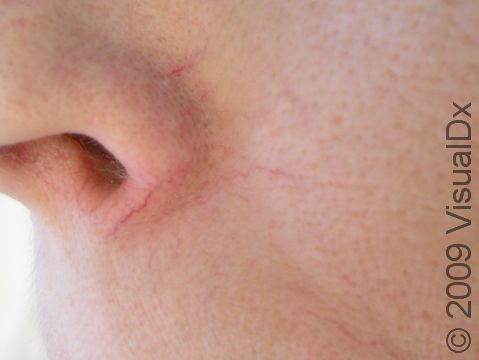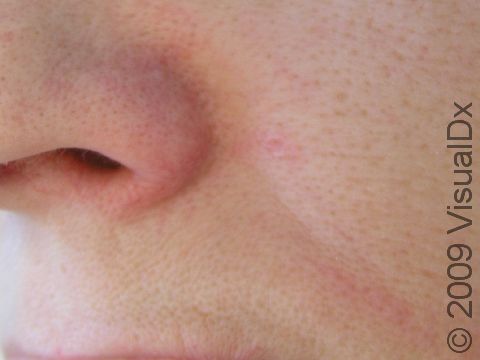Vascular Lesion Treatment, Laser
Lasers produce high-intensity light that can be used to selectively heat blood vessels. A variety of machines can be used, although the effectiveness and side effects for an individual can vary. The advantage of lasers is the ability to target the blood vessel while leaving the surrounding tissue undamaged. As a result, the risk of scarring is extremely low. Most treatments are performed by doctors who specialize in laser surgery or the technicians they supervise. Cost depends on how much is treated but generally ranges from $200–500 per session.
Who's At Risk?
A typical candidate suffers either from diffuse redness (many fine blood vessels), individual bothersome linear blood vessels, or both. The most commonly treated area is the face, especially the nose. It may take up to a month to see the full effects of the treatment, but the final result is permanent. However, persons who suffer from excessive blood vessels may generate new vessels that may require treatment in the future.
Signs & Symptoms
How to prepare for a session:
- Avoid having tanned skin – Avoid sun in the middle of the day, use sunscreen with a high SPF, and wear sun-protective clothing (eg, a hat and tightly woven clothing).
- Use numbing cream for 30–90 minutes before the procedure, if recommended.
- Avoid medications and supplements that make bruising more likely (only if stopping any of the below medications has been discussed with your doctor):
- Aspirin
- Ibuprofen
- Vitamin E
- Gingko and ginseng
- Fish oil supplements
- Prescription blood-thinning medications (eg, warfarin or heparin)
With laser vascular lesion treatment, there are many variations of a “typical session,” and what happens during the session depends on the technology used. Sometimes numbing cream is used for 30–90 minutes beforehand if the treatment is painful. Before the treatment, the patient will lie down on an exam bed and the area will be cleaned to remove any makeup. Once the treated area is identified and confirmed by the patient, eye protection is worn by every person in the room. A variety of eye protection may be used for patients including the following: metal-lined adhesive pads, goggles, or eye shields – either over or under the eyelid. Next, the doctor will program the machine with appropriate settings and pick up a handpiece. The handpiece is placed on the skin, and either a trigger or foot pedal is used to fire the pulse of laser energy targeting a 1–3 cm area of skin. The sensation during treatment is very brief and is often described as a heated pin-prick for each laser pulse. Treatment times vary due to the size of the area to be treated and machine used, but a typical treatment takes approximately 15–30 minutes.
Self-Care Guidelines
A gentle sunblock and sun avoidance is important after this procedure. Do not rub or pick at the skin. Cold compresses can help with redness and swelling. Sleeping with one’s head elevated can allow swelling to drain from the head.
Treatments
Laser treatment is usually the best option for vascular lesions of the face. On the legs, injection of a medication to destroy the blood vessel (sclerotherapy) can be a better option for spider veins. Deeper veins may need treatment with surgery or very small lasers that are inserted into larger blood vessels.
When to Seek Medical Care
When used by well-trained laser surgeons, unanticipated risks – such as blistering, discoloration, or scarring – are very low. Expected side effects include redness and sometimes bruising lasting for a few days. Avoiding blood-thinning agents, such as those listed above, can reduce the risk of bruising.
Last modified on October 10th, 2022 at 8:46 pm

Not sure what to look for?
Try our new Rash and Skin Condition Finder


